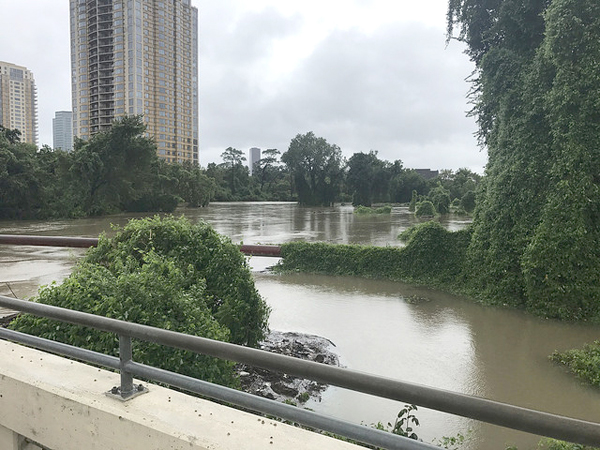- La Feria Community Holds Succesful Business Mixer Event
- Little Nashville to Take Place in Downtown Mercedes
- Lions Basketball Captures District Gold
- La Feria ISD Students Compete in Regional Chess Tournament
- Lions End First Half of 32-4A on a High Note
- La Feria ISD Held Another Successful Parent Conference
- Strong Appearance for Lions at Hidalgo Power Meet
- LFECHS Students Get to Meet Local Actress
- Students Participate in Marine Biology Camp
- Two LFECHS Students Qualify for All-State Band
Texas Communities Planting Seeds of Protection Before Next Big Storm
- Updated: June 1, 2018

Hurricane Harvey brought more than 50 inches of rain to the Houston area in a four-day period last August. Photo: urban.houstonian/flickr
by Stephanie Carson
SAN ANTONIO – Hurricane Harvey left its mark on the Houston area, tying with Hurricane Katrina for the most costly storm at $125 billion in damage. For the San Antonio River Authority (SARA), the storm is a cautionary tale of the dangers of not preparing for the next big storm, and SARA assistant manager Steve Graham said they’ve realized their answers come from solutions Mother Nature has provided for thousands of years.
“We’ve learned from hurricanes and from major events that green infrastructure, your natural riparian areas, your wetlands, your shorelines, are important buffers against flooding, against water quality issues, against tidal surge,” he said.
Graham said San Antonio also is preparing for a population surge of more than 1 million people between now and 2040, prompting a need to pay attention to how the city grows. The city’s strategy is so successful that it’s the subject of a conference in San Antonio next week: the Southwest Stream and Wetland Restoration Conference, organized by the nonprofit Resource Institute. The Institute is dedicated to improving water quality and water resources in Texas and across the country. There is still time to register for the conference, and it is open to anyone. The theme of the conference, “Restoration to Build Resilient Ecosystems,” is bringing together some surprising partners to collaborate on solutions to storm preparation and water management, Graham said.
“At this conference, they’ve invited people who you wouldn’t necessarily call stream and wetlands experts, but what we are experts in is creating resilient communities,” he said. “We’re embracing something called the triple bottom line, which is: Don’t just look at the dollars in present value.”
Pay attention to the social, environmental and financial impact of projects, Graham said.
Neighboring Louisiana understands the importance of early preparation for storms after surviving Katrina. Pat Forbes, executive director of the Louisiana Office of Community Development, said they’re constantly preparing for similar storms.
“It’s quite clear to us now that these are not isolated events and that we’re going to have to be more resilient in the future,” he said, “and so consequently that means building back in ways and doing things and considering options that we might not have considered before.”
Experts say the current climate model of periods of drought followed by periods of extreme rainfall is consistent with the impact of climate change the region is seeing.
Information on the conference is online at southweststream.squarespace.com.


